Inside: If you want a mix of pretty colors for your eggs, strongly consider this breed. It will get along with your other hens and give you 4-5 light greens a week.
The Green Queen is a specific type of Easter Egger that lays light green eggs. It is a hybrid, not a purebred, so it will never be a show chicken. But if you’re like most people, that doesn’t matter. And this breed gets just about everything else right. If you want just a beautiful range of eggshell colors, this is the perfect practical chicken breed for your backyard.
At a Glance
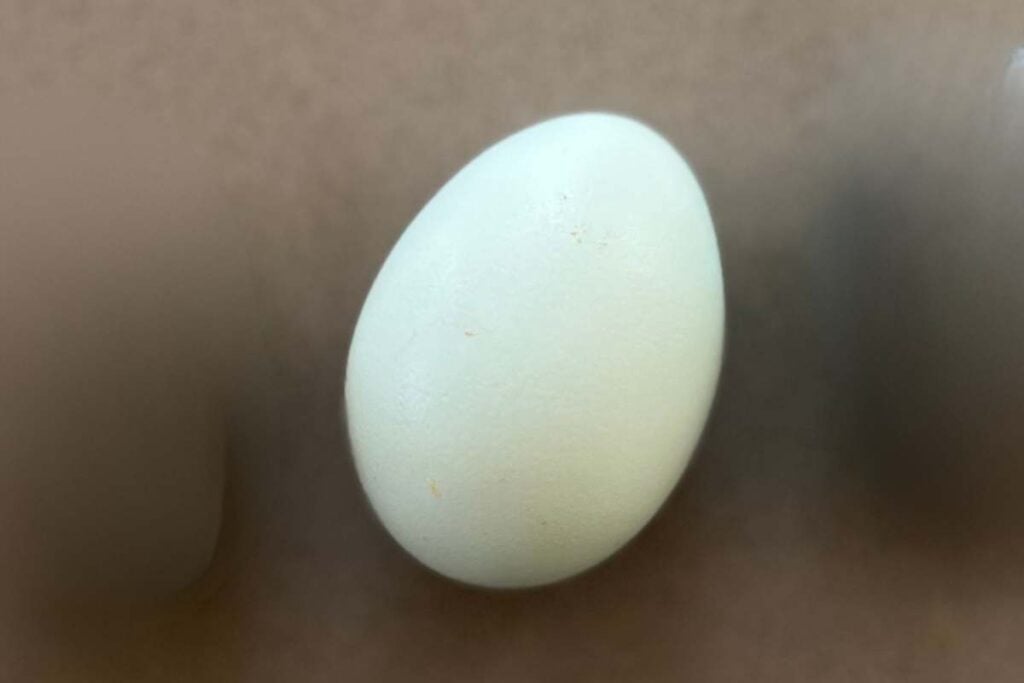
Green Eggs!
Combines good production qualities typically seen in white or brown layers with pretty colors

Cute and Fluffy
Lots of feathers, little beards, and even fluffy feet
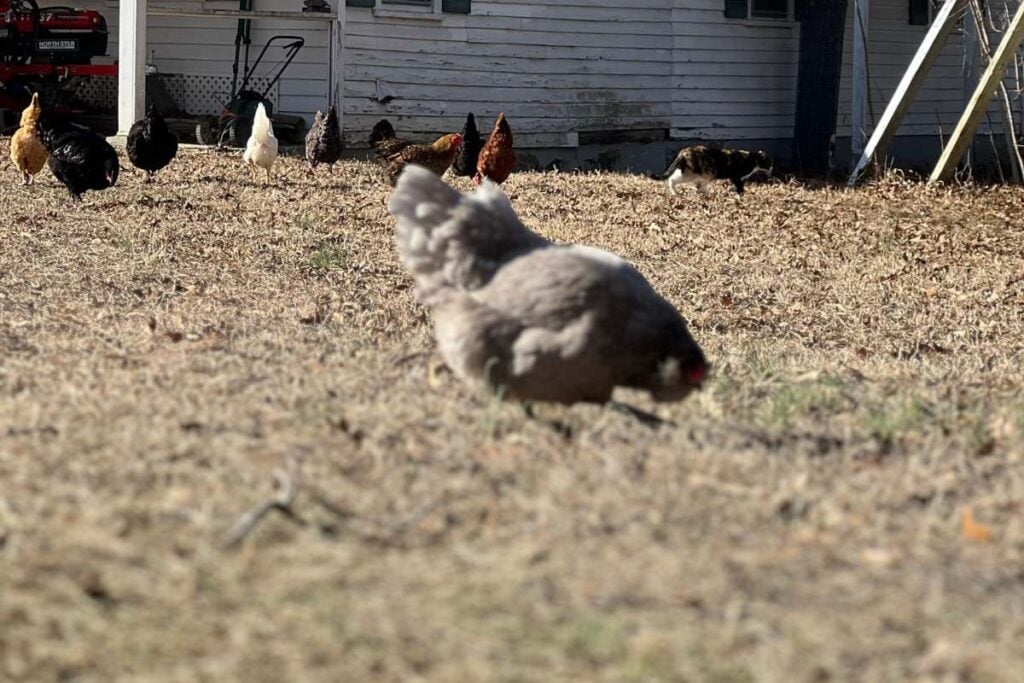
Good Foragers
They will go eat grass and bugs with the rest of the flock.
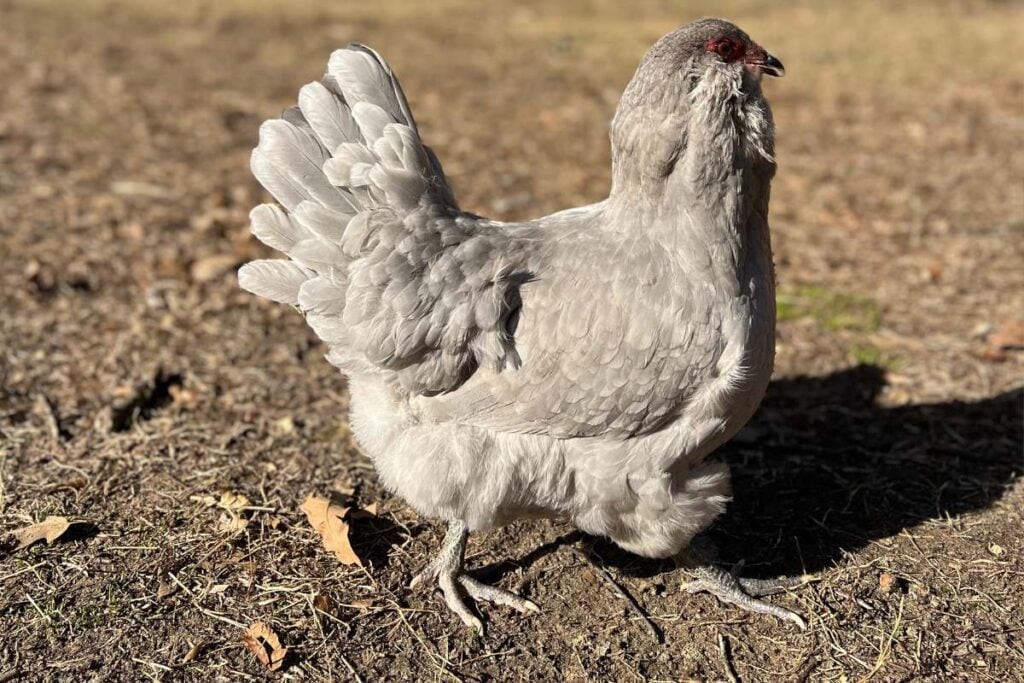
Trouble Free
Unless you’ve chosen a beautiful designer breed, most birds are easy care.
A Hybrid with Different Parents (A Mystery!)
The Green Queen is a type of Easter Egger bred to produce many large, green eggs. Easter Eggers are hybrids but Green Queens are one specific type of that family.

This is a relatively new variety.
They were created by Meyer Hatchery, who does not reveal the lineage of the breed, but it is certainly a combination of a blue layers and brown layers. I would guess that the brown layer genes are largely Cinnamon Queen (which is itself a hybrid), because of the name and the number of eggs they lay. There’s definitely some Ameracauna or Cream Legbar in there too. They won’t tell me, I’ve asked!
Green Queens vs. Easter Eggers
The biggest difference you will notice between this variety and an Easter Egger is the number of eggs. They will consistently lay many large green eggs per week. Easter Egger hens will sometimes be prolific layers, but not always, and the color you get is always a mystery.
Most chicken keepers have heard of Easter Eggers, which are not a breed, exactly, but a collection of chicken “mutts” that lay green and blue eggs. You could order a dozen Easter Egger chickens and receive hens that look different and lay different colored eggs, although they will all lay varying shades of blue and green. With Green Queens, you know what you’re getting.
Sort of.
What Do Green Queens Look Like? Anything!
Unlike many chicken breeds, Green Queens don’t have a standard look. This is somewhat confusing, but also fun.
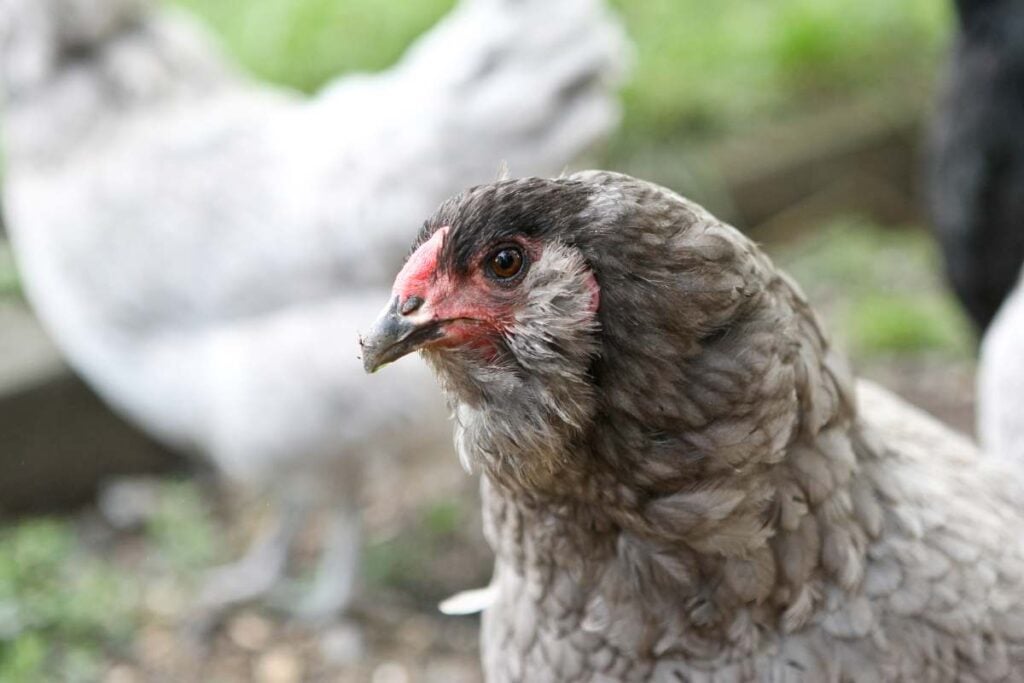
These chickens come in pretty much any color you can think of. Some are solid black, white, or buff. Others mix multiple colors or have speckles. You might see one with blue, gold, and brown feathers mixed together, or another with white patches on a black body. Their feather patterns change too – laced, partridge, or mottled. Even their leg color is different. We have one with solid gray legs.
Most Green Queens are medium to large chickens.
My favorite thing about these birds is their “muffs” or “beard” – those fluffy feathers around their face that make them look so sweet. Their legs might be slate blue, green, or yellow, and often have feathers growing down them.
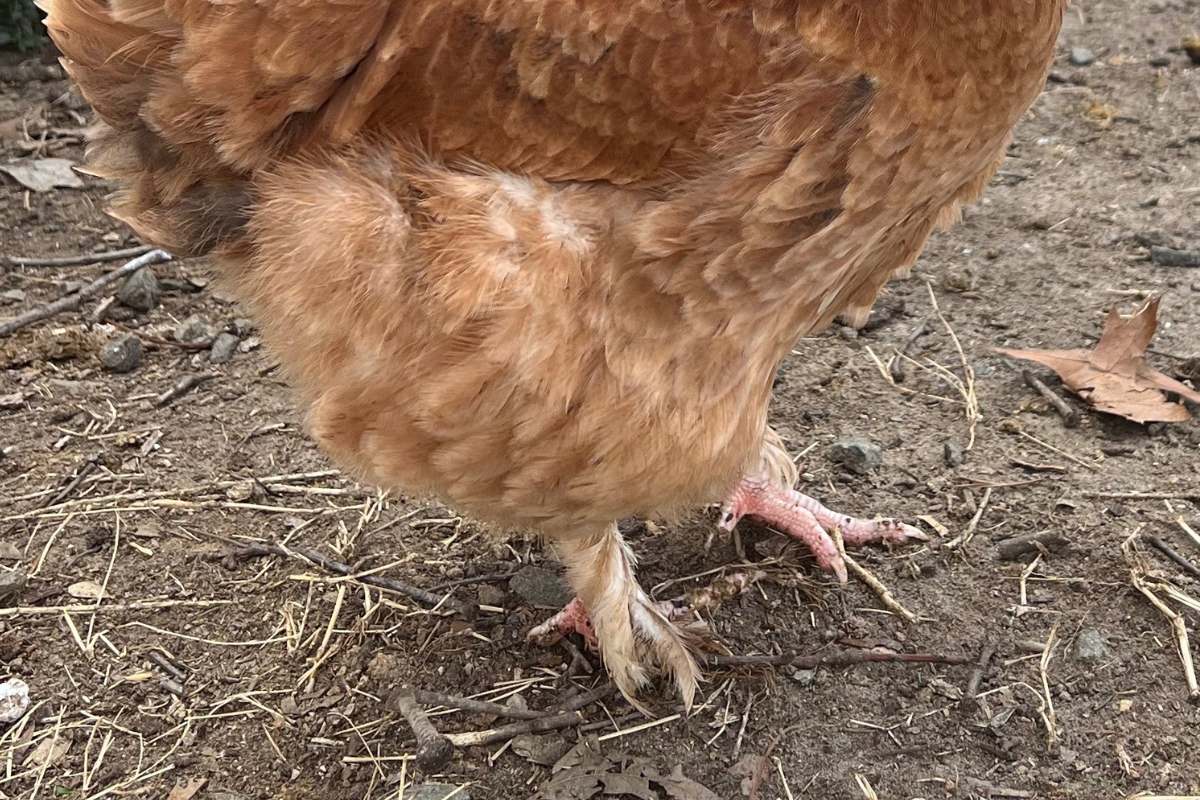
Oh, and many of them have feathered legs. But not all of them. And some other breeds can have feathered eggs randomly. Just to add to the confusion of figuring out which is which!
Green Queen Personality Traits
Honestly, most chickens have similar personalities, except for crazy Leghorns, mean Rhode Island Reds, or super sweet Orpingtons and Silkies. This is a breed that will behave like your average chicken: friendly enough, not trying to start any fights, but also not really interested in being your best friend.
They tend to be easygoing and get along well with both their human caregivers and other members of the flock. They’re fine in mixed flocks and families with children.
Green Queen roosters have a reputation for being gentle, but I have not personally experienced this. Ours was as aggressive as any other variety. But if you’re looking for a gentle rooster it might be worth a try.
Caring for Green Queens
First off, your Green Queens need a safe, comfy home. Make sure their coop keeps predators out and bad weather away. Each chicken needs at least 4 square feet inside the coop and 10 square feet in the run.
For food, use a good quality layer feed that has all the nutrients they need. Yes, you can give them kitchen scraps and let them hunt for bugs and plants too! They LOVE this, and it keeps them healthy.
Always have clean water available. Since Green Queens lay so many eggs, put some oyster shell in a separate dish to help them make strong eggshells.
Check on your chickens regularly. If they start acting different, eating less, or laying fewer eggs, they might be sick.
Green Queens are social birds that like to stay busy. They’re happiest when they can roam around freely and spend time with you.
Why Egg Color Varies
The short answer: genetics. Eggshell color is in a chicken’s blood and they will always lay green eggs. It doesn’t matter how you feed them, treat them, or anything else.
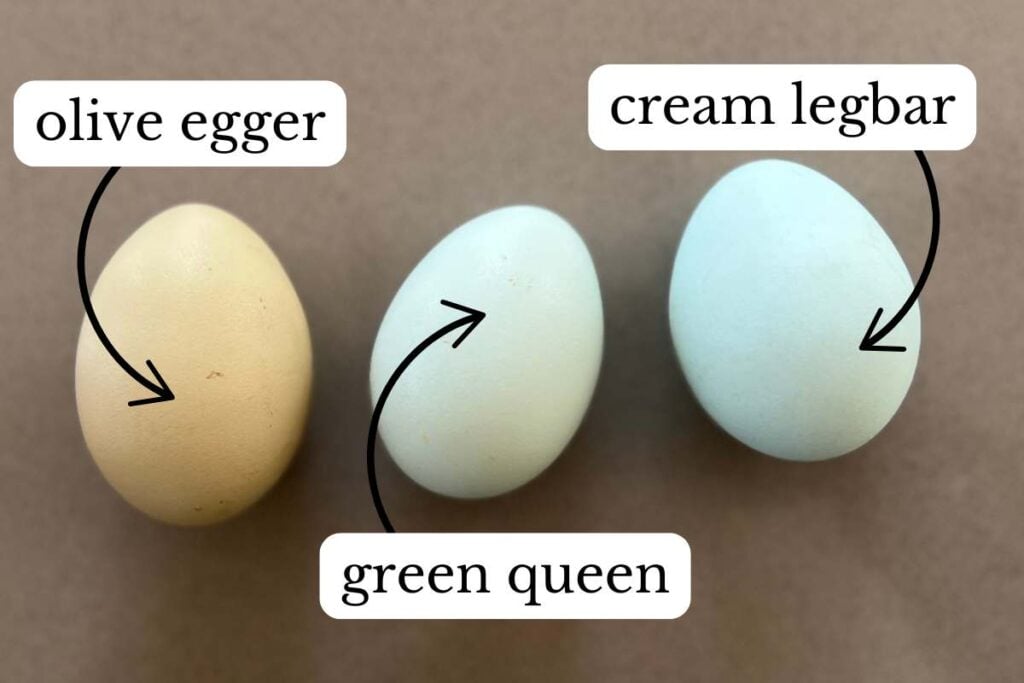
Here’s the long science answer:
Green Queen Chickens have inherited a special gene known as the ‘oocyan’ gene. This gene causes the hen to deposit a green pigment called biliverdin onto the eggshell as it’s being formed.
Here’s where it gets even more interesting. All eggs, no matter the breed, first start as white. If a chicken lays brown eggs, it’s because the hen adds a pigment called protoporphyrin IX later in the egg formation process. Now, in the case of our Green Queen Chickens, they have inherited both the gene for a blue eggshell and the process for a brown eggshell coating. So, they lay an egg with a blue interior and then add a layer of brown, which gives the egg its distinctive green color. (Boring, I know.)
More Favorite Chicken Breeds
Of course, having all green eggs would be weird. We must have a mix! And this is how I ended up with over 40 chickens for a family of five.
- White Leghorns are the best white layers, despite some personality flaws.
- For productive brown egg layers, you can’t beat Cinnamon Queens!
- For true blue, my favorite is Cream Legbar.
- Olive Eggers are also super productive green egg layers and lay a different shade of green.
- A few chocolate layers are a must (but quite expensive)
If you have a mix of all these, you’ll have every color. And a ton of chickens. Have fun!
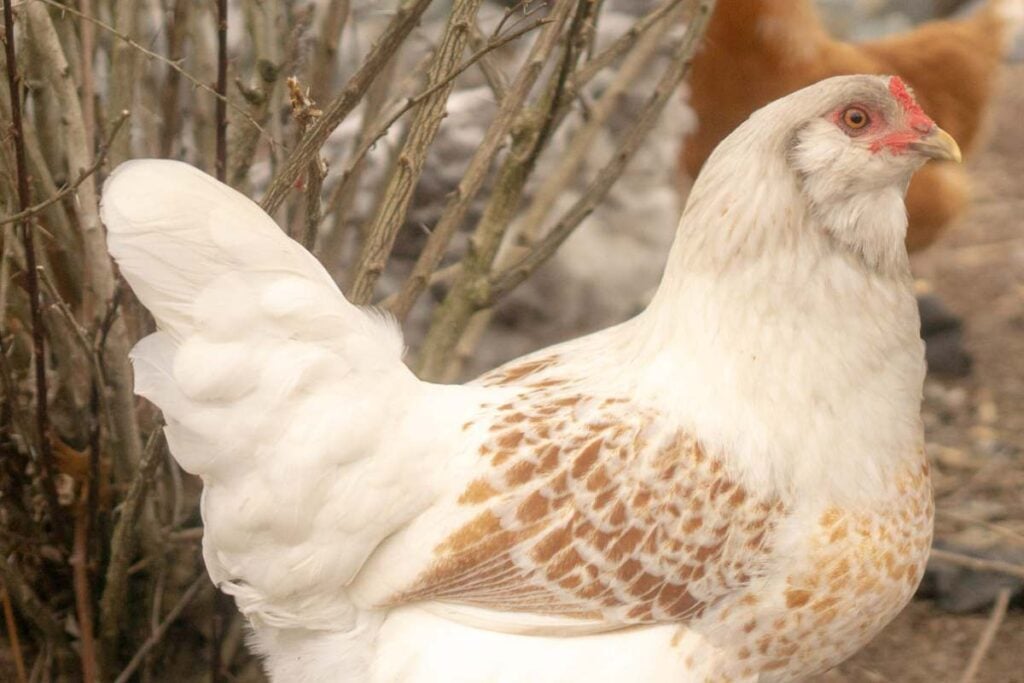


More to Explore
Simple Homemade Marinara
How to Make Garlic Powder in a Dehydrator
Homemade Spiced Apple Rings (For Canning)
Red Hot Cinnamon Pickles (Canning Recipe)